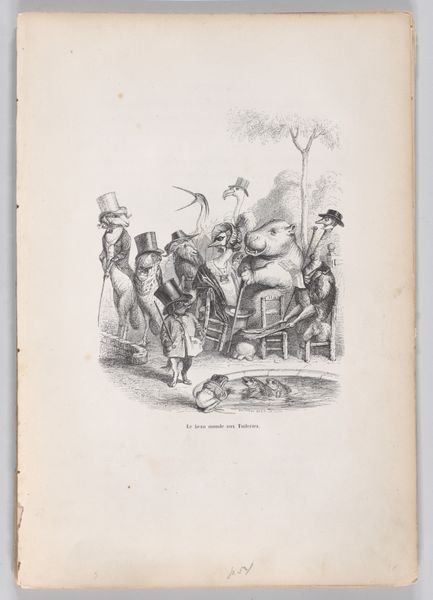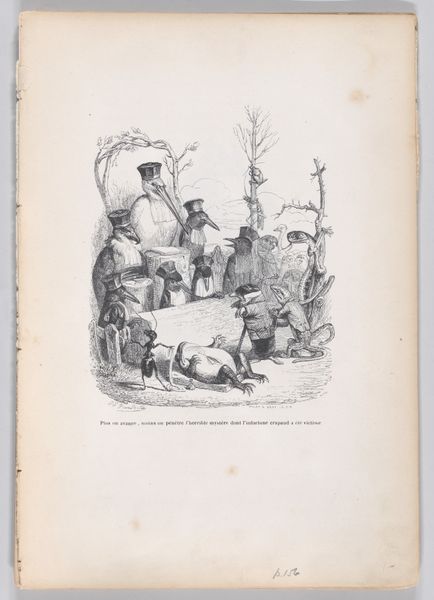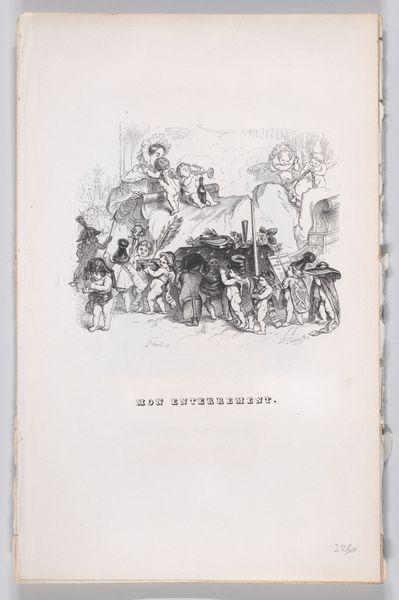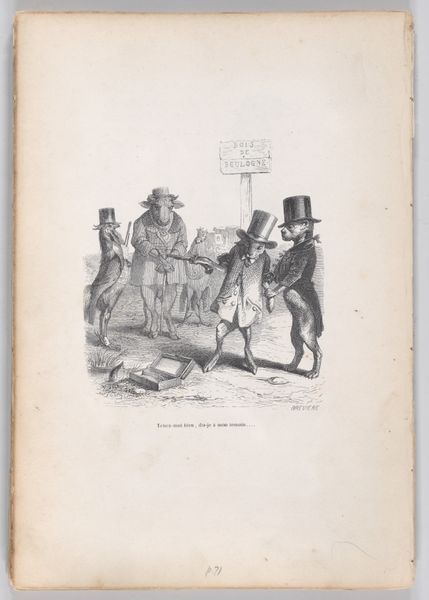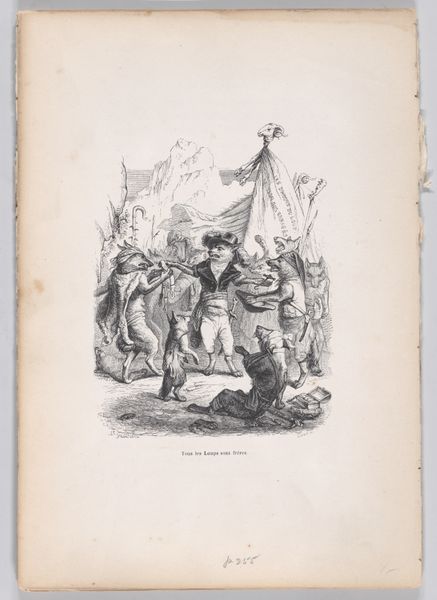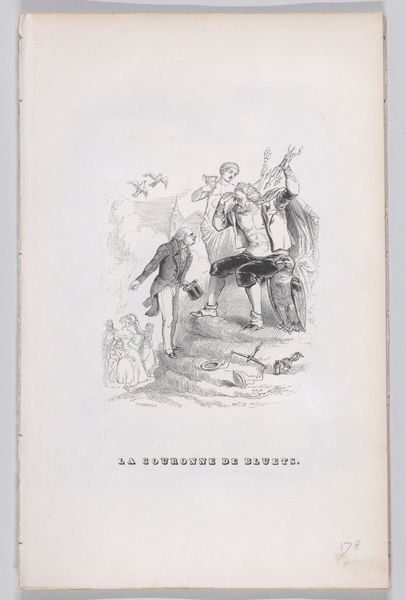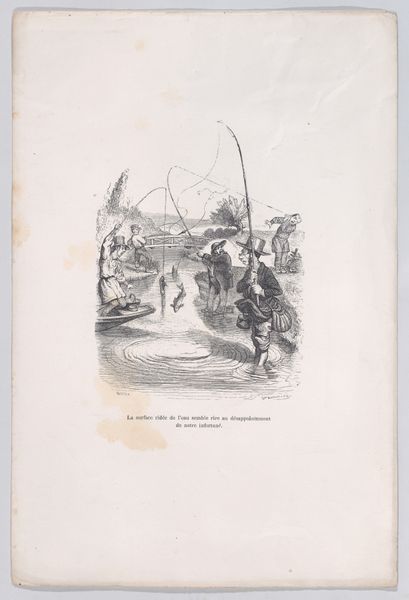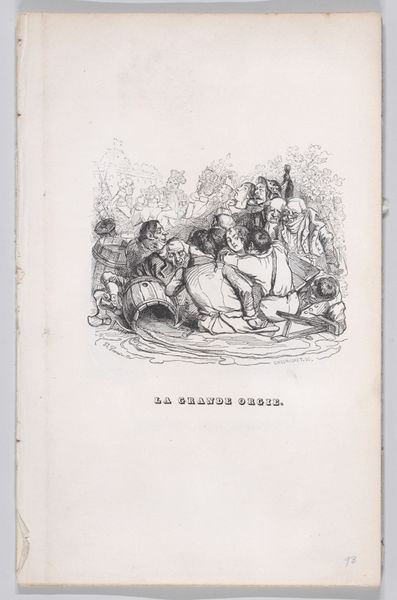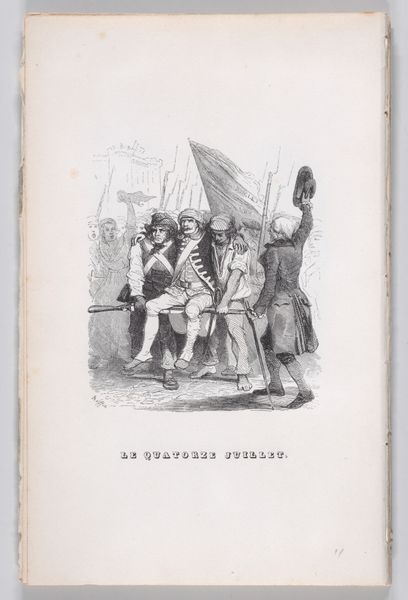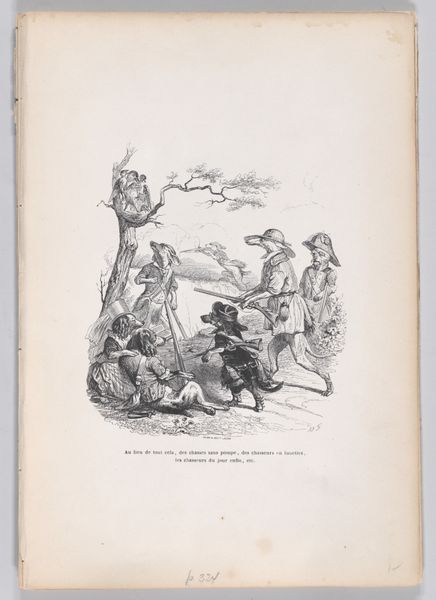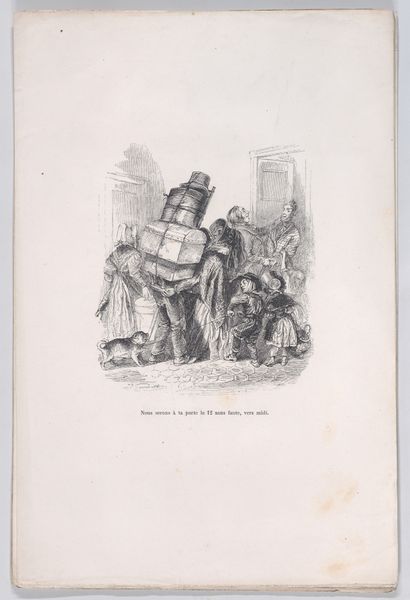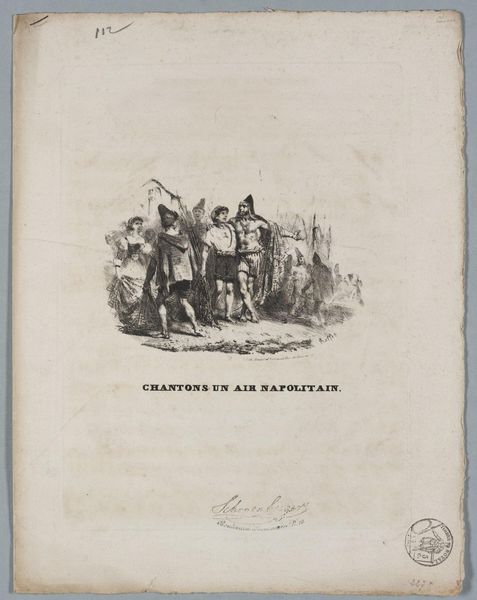
"Request of quality dogs" from The Complete Works of Béranger 1836
0:00
0:00
drawing, lithograph, print, etching
#
drawing
#
lithograph
# print
#
etching
#
caricature
#
romanticism
#
history-painting
Dimensions: Sheet: 8 5/8 × 5 1/2 in. (21.9 × 13.9 cm)
Copyright: Public Domain
Curator: This etching from 1836, entitled "Request of quality dogs" is by J.J. Grandville. It’s from a series of prints that was eventually compiled into the set "The Complete Works of Béranger". It’s currently located at the Metropolitan Museum of Art. The piece feels… unsettling, doesn’t it? Editor: Unsettling is the perfect word! The mood is definitely uncanny; all these dogs dressed up as bourgeois gentlemen! The scale seems intimate, a drawing or a small print— but the satirical bite feels rather sharp. I’m immediately thinking of themes of power and class. Curator: Precisely. Grandville was a master of anthropomorphic caricature, tapping into a long tradition of animal symbolism to critique societal norms. Note how each breed seems to embody a specific type – the bloodhound in judicial garb, the bulldog with his chest puffed out... Editor: Yes! And by conflating these archetypal canine traits with human clothing and social roles, he exposes the absurdity of rigid class structures. It becomes a very obvious statement about how power functions, then, by reducing everyone to base instincts or characteristics, no matter what fine clothes you wear. The Romanticism tag makes me consider the period’s themes of individual expression in counterpoint to this enforced societal performance, or, this "dog and pony" show. Curator: Exactly. The style definitely falls in line with Romanticism by engaging with the politics and social issues of the period in a personalized way. There’s an almost allegorical feel. One cannot overlook the deep roots that dog imagery possesses across cultures. Here, are they watchdogs of morality or merely mimicking their masters? Editor: That's key. The reflection of the powerful, then, leads to the inevitable question about where genuine expression lies versus mere obedience to authority or fashion. Are they even aware they are mimicking, or are they merely acting out societal expectations? Curator: It's fascinating to see how Grandville uses these familiar images and types to stir within us deeper questions of status, behavior, and perception. Thank you for drawing those contemporary strings through this artwork. Editor: It speaks to how artists can cleverly dismantle perceived social hierarchies. Art as cultural commentary indeed. It helps us consider the symbolic weight that still shapes the way we interpret the world, right?
Comments
No comments
Be the first to comment and join the conversation on the ultimate creative platform.
